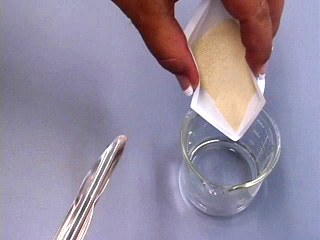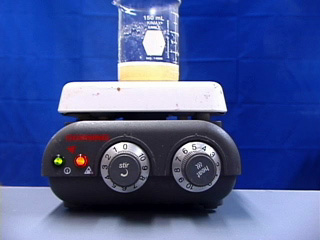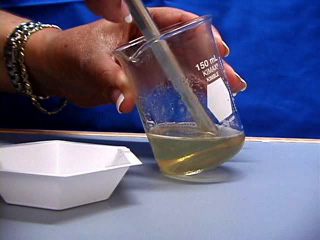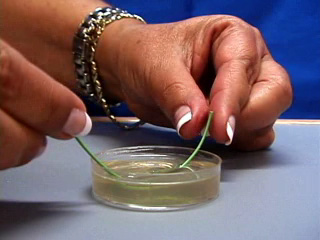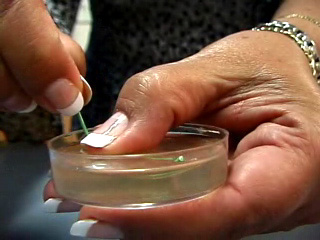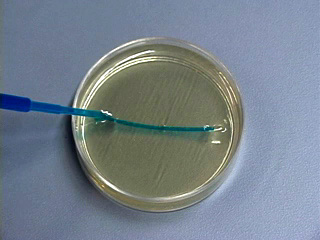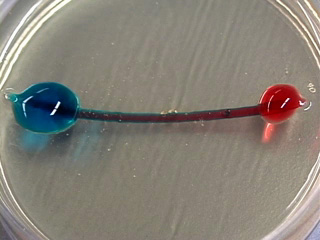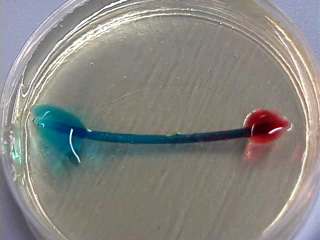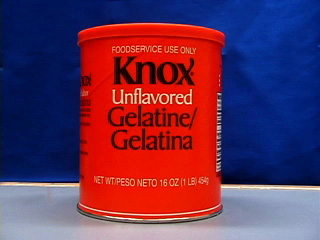
Gelatin Microfluidics
Procedure devloped by Evelyn Montalvo.
Microfluidics is an emerging technology that involves manipulating fluids that are geometrically constrained in a small channel, often at the submilliliter scale. It has applications in the fields of medicine, molecular biology and analysis, biodefense, pharmaceuticals, optics and microelectronics. Inkjet printers are a result of this technology as well as DNA chips.
In this lab you will investigate how the internal pressure of a water droplet changes with radius.
Flowing fluids also may not mix (laminar flow instead of turbulent flow). This depends on the ratio between momentum and viscosity, called the Reynolds number. Without mixing, the molecular transport between the fluids would only be through diffusion.
| Procedure | Wear eye protection |
Add 5 g gelatin to 30 mL water and stir to form a paste. Heat gently to dissolve. Scoop off any foam. Pour warm gelatin solution into a small Petri dish. Let cool about 5 minutes until the gelatin partially supports the weight of a bent wire. The lowest point of the wire should not sink to the bottom of the dish.

Cool further in a refrigerator. This takes at least ten minutes and could be left overnight. Clip off one end of the embedded wire. Support the gelatin and gently pull out the remaining length of wire. Add food coloring at one end until it travels through the channel and reaches the other end. Add a different color at the other end. Make sure that the drop of the second color is smaller than the drop of the first color (you can add more first color if needed). If gravity was the most important force then the large drop would decrease in size and the small drop would increase until the drop sizes were equal. You would observe the color of the first drop moving across the channel. Is this what you observe?
Does the color flow away from the large drop or away from the small drop? If you rinse out the channel with water (ignore slight amounts of color from dye that has diffused into the gelatin), the gelatin can be reused for additional trials. Knox gelatin, food coloring (two colors), plastic droppers, small Petri dish (60x15 mm), hotplate, 22 gauge insulated wire, wire cutter
The batch size used to prepare the gelatin above could be scaled up for class use.
University of Wisconsin Materials Research Science and Engineering Center
Interdisciplinary Education Group | MRSEC on Nanostructured Interfaces
This page created by George Lisensky, Beloit College. Last modified June 16, 2013 .
